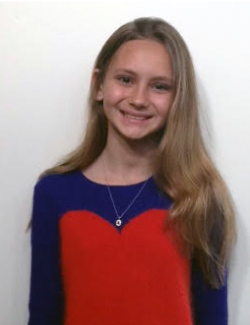If you’re reading this page, then like so many moms and educators that we’ve talked to, you’re probably feeling frustrated, hopeless and even anxious about your child or student’s constant struggles to spell basic sight words.
And the methods you’ve tried are either too boring, not working, unmotivating, or a combination of all of those! Right?
Are you wondering and searching for something that will help those tricky words finally land in the long term memory of your dear one?
Well, that’s exactly what set Shawn Denise Cunningham on a mission to find real solutions for her daughter Kylee, who was diagnosed with dyslexia and ADHD. Shawn’s kind of a warrior mom with a bit of nerdy side, and she wasn’t willing to keep hitting the brick wall of her daughter’s education. Frustrated when she saw her bright and creative daughter get overwhelmed when trying to spell basic words, Shawn devoted herself to researching how memory works in the brain and what methods really can help people with dyslexia and learning disabilities.
And that’s how See to Spell was born. It’s a system that adds pictures and a simple story to provide concrete clues and memory links so that your child’s brain transports the spelling of the word into long term memory. And it really works!
But we’re getting ahead of ourselves…
Where were all the experts?
What were the best methods? Shawn soon discovered that there wasn’t much useful information available to help people with learning disabilities. Only a handful of reliable websites were out there, but even they didn’t provide much in the way of effective teaching methods.
She felt like she was panning for gold, desperately looking for ways for Kylee to learn things like:
• how money works
• the order of the days of the week
• memorizing addition and subtraction facts
• long division
• multiplication facts
• grammar and punctuation
Undeterred, Shawn pushed on, searching for information about methods and resources that could help her daughter. She searched out and spoke with a few leading experts in the field, one of whom suggested that she homeschool Kylee for a year or two to close the gap in her daughter’s reading and math skills.
So she did. Shawn homeschooled Kylee, using a reading and spelling system that has been proven be effective for dyslexics. But after 2 ½ years of study and drills and exercises, the sight word method in that system did not work for her. Kylee still had a lot of difficulty spelling sight words.
Time for Shawn to become the expert
Dissatisfied and frustrated with the sight word learning systems on the market, Shawn dove into reading all that she could about dyslexia, memory, and the brain — and how to improve learning. She read what seemed like a bazillion books on the subjects. She poured over the research in learning styles and brain activity and how dyslexic students learn differently than “normal” students.
An exciting discovery
One big difference is that dyslexic kids tend to be right-brain learners and so they need the assistance of right-brain learning strategies to get new information to stick into long-term memory. Their left-brain activity is reduced compared to others; they depend more on their right brain — the hemisphere that is involved with elements like spatial relationships, color, movement, and meaning.
It was a powerful discovery. So Shawn and Kylee began to add images and stories to the flashcards they were using. Kylee is naturally artistic and as the cards took on this new dimension, learning became more fun. Even better: Kylee started retaining the spelling of sight words for longer periods of time.
Shawn continued to weave in the research-based memory strategies she was discovering. For example, did you know that it helps us memorize something if it includes some unique or unexpected element, or if color and images are associated in certain ways?
Apparently, it’s easier to remember the image of a dog on a bike than a dog sitting next to a bike!
Inspired by their progress, Shawn sprinkled more features — like repeated graphical elements and patterns — and even added a little story line to tie together the meaning and spelling.
Finally! Kylee was remembering sight words and how to spell them better than ever. She was reaching grade-level competency. They were on to something!
It was bigger than the two of them It started to dawn on Shawn and Kylee that what they were creating could help a lot more people than just themselves. So Shawn worked with a professional artist for almost a year to fine-tune the drawings and integrate all the elements that would help sight words stick in long-term memory.
“Students shouldn’t have to work so hard or use boring and time consuming methods to learn to spell basic sight words! I wanted to make the process more fun, faster and easier, and make a lot of people’s lives a little better!” – Shawn Cunningham
It’s not easy for dyslexic learners in public schools
Research has shown that approximately 80% of struggling learners are right-brain dominant. But since school curricula is typically geared towards left-brain activities —like sequences of numbers or events, analysis and rote memorization — students with dyslexia have a hard time learning in that setting.

Kylee Cunningham, artist, creative writer, and awesome daughter
And most teachers in public schools —even special education teachers — don’t receive training in instructing students with dyslexia, so dyslexic students are left behind.
Shawn wants to help other parents quicken the learning curve too.
Shawn consulted with numerous dyslexia experts, tutors and forums over the past few years to find the best tools and resources around so that she can keep improving See to Spell and so she can help teachers, tutors, schools, adults and other parents like her.
While Kylee is in a fantastic Montessori charter school, Shawn continues to supplement her education at home using curricula for dyslexics.
“My desire is to provide information about, and access to, tools that are so deeply needed — from the simplest ones, like learning the order of the days of the week, to the ones required for a successful experience in high school and college.” – Shawn Cunningham
And Morkie likes to help too!
What else can we tell you about Shawn? She loves playing with Lola, the family’s crazy, hypo-allergenic Morkie, (a combination of Maltese and Yorkshire Terrier), who looks like a cross between a cat, rabbit, and dog!
Shawn loves to travel to laid-back beach towns, lives with her wonderful husband, John, and from time to time enjoys a great batch of homemade guacamole and homemade hot sauce.


